The best gear for small boats is compact and serves more than one purpose. My galley box, for example, stores my cooking supplies and shields my stove from the wind, serves as a slip thwart for rowing, and is part of the platform for sleeping. The Multi-Fuel Stove from nCamp is compact and has just one purpose, cooking, but does so using many different fuels, whether solid, liquid, or pressurized gas. Its versatility is a welcome addition to my outdoor adventure kit.
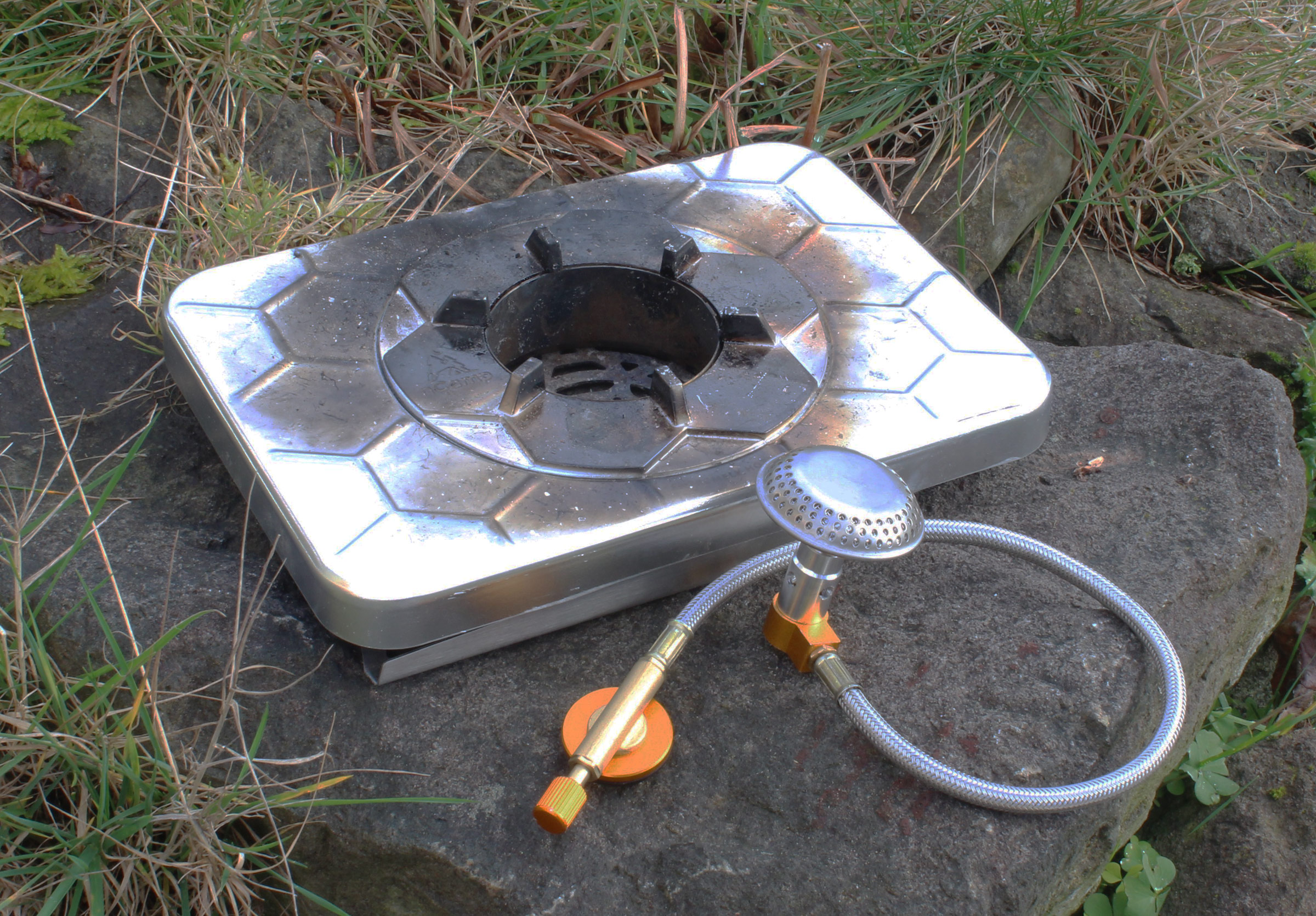 Photographs by the author
Photographs by the authorWith the combustion chamber collapsed and the legs folded, the stove is quite compact.
The stove is made of aluminum and stainless steel, weighs 30.4 oz, and is well designed and sturdily built. Its top measures 9″ x 6-1/2″, it is 6-5/8″ tall when in use, and just 2″ tall folded. The aluminum legs provide a steady base that’s not prone to tipping over. A telescoping combustion chamber, made of six concentric stainless-steel rings, works like an upside-down version of the plastic drinking cup I had for backpacking when I was a kid. The bottom of the chamber is a circle of stainless steel, perforated for airflow. In its center is a 1/2″ hole to accept the burner head of an adapter to fuel the stove with a gas canister.” hole to accept the burner head of an adapter to fuel the stove with a gas canister.
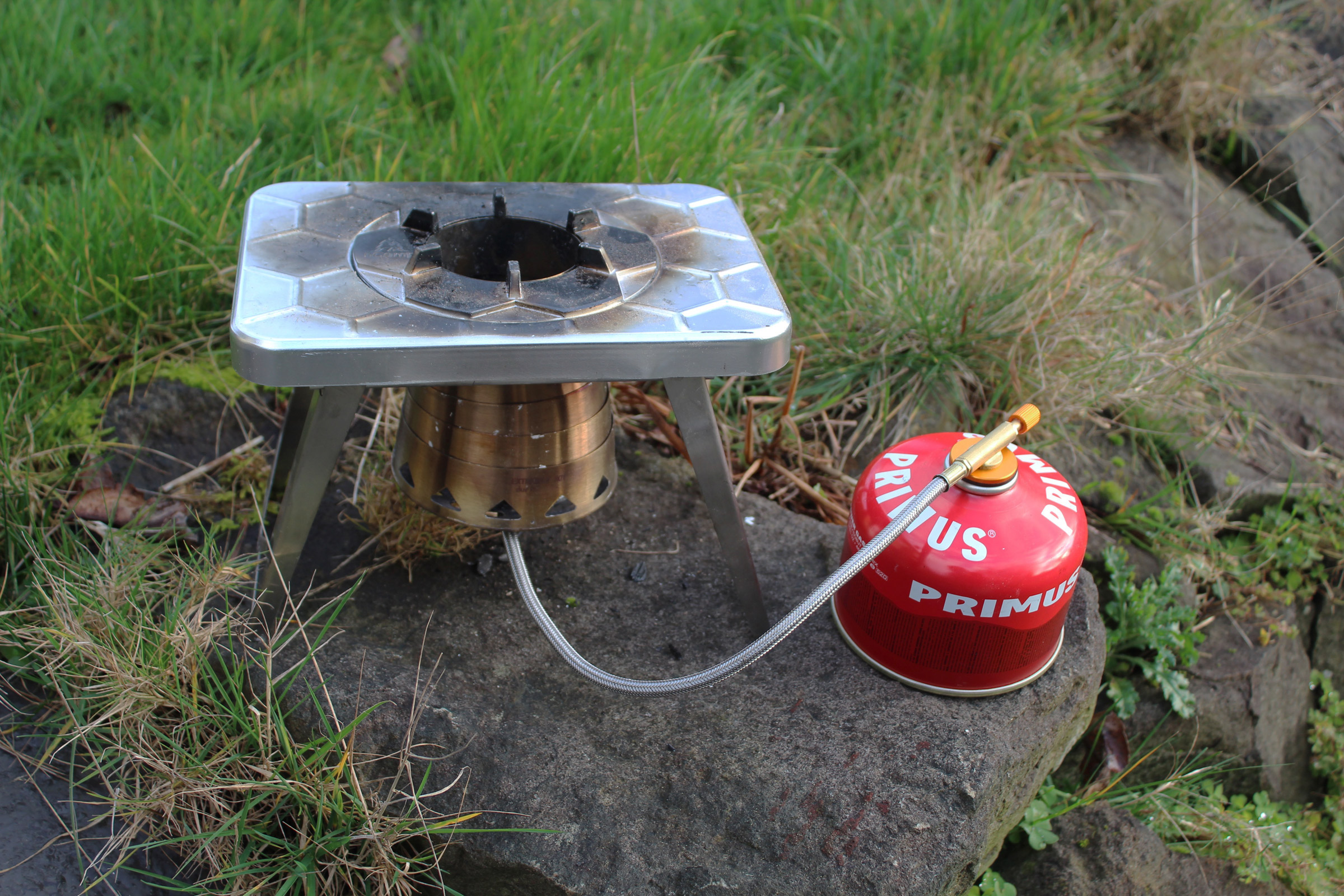
The valve and hose have a fitting designed to fit propane/isobutane canisters.
The adapter has a 12″ stainless-steel-clad hose that connects the burner head to a canister fitting, which is equipped with a valve. The threaded fitting is compatible with propane/isobutane canisters. That type of canister isn’t one that I have used with my other stoves or torches, and I wasn’t thrilled with the prospect of adding to the ever-growing collection of canisters I have for cookware and metalwork. Fortunately, there is a wide array of adapters that make it possible to connect almost any kind of gas stove to any kind of canister. I bought one for the propane cylinders I use for torches and stoves, and another for the butane cartridges that fuel my other camp stoves.
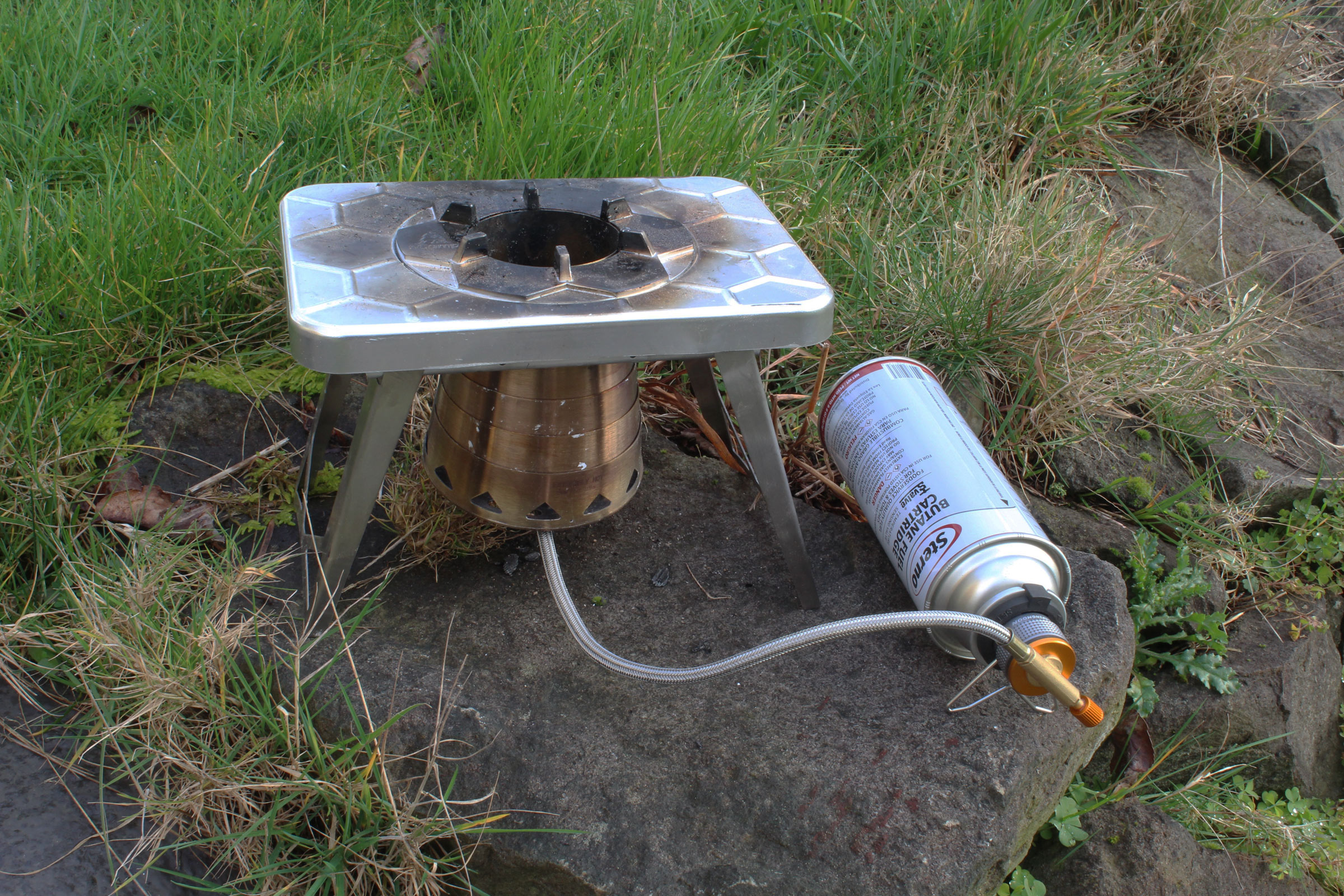
The butane adapter has a bracket to hold the cylinder in the correct position.
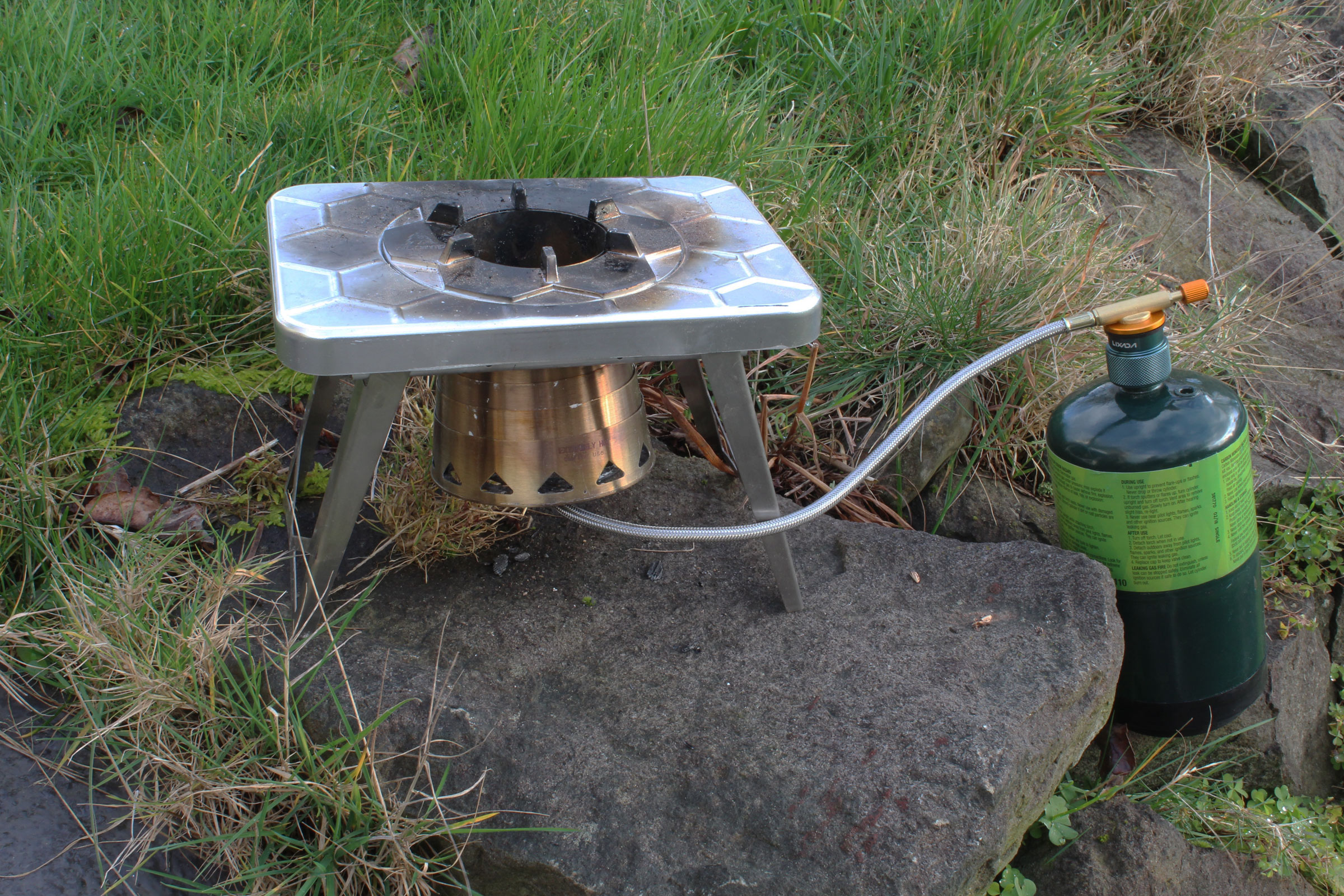
A 1-lb propane canister provides a lot of gas quickly and will boil water faster than any other fuel.
I did boil tests with the nCamp adapter’s valve wide open and timed how long it took to bring 16 oz of water to a rolling boil. The propane/isobutane cartridge that the stove is designed for took 3:30 (minutes:seconds), the butane was slower at 5:20, and the propane was faster at 2:45. The propane was notably louder and, I suspect, being delivered at a significantly higher pressure.
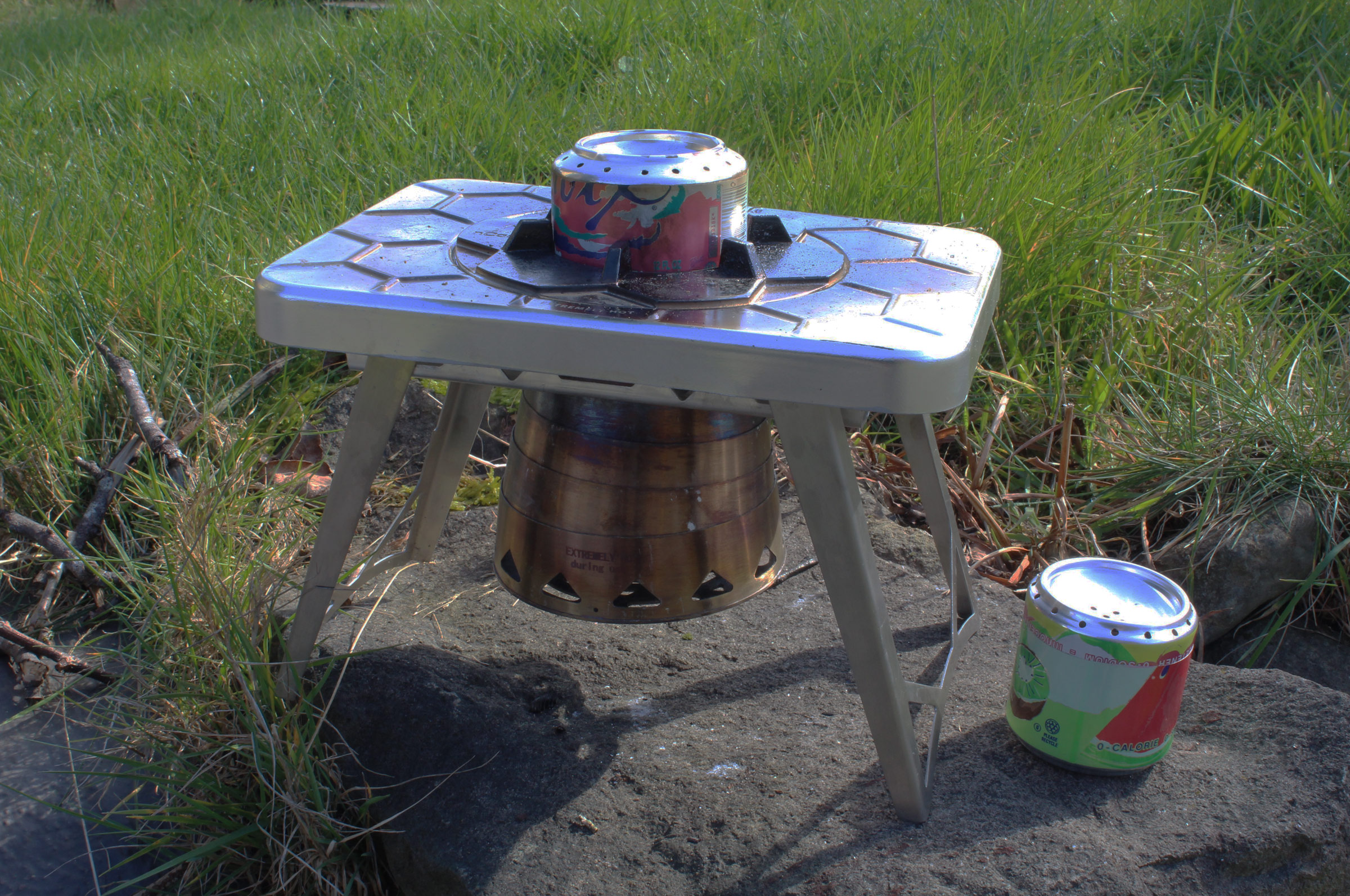
An alcohol burner made from a standard 12-oz aluminum can and shown here wedged in the opening, just fits into the top of the combustion chamber. The second stove is made of a tall 12-oz can.
The combustion chamber, with the burner head removed, will burn almost anything that will fit through the 2-5/8″ opening at the top of the stove. A DIY ultralight alcohol stove made from a standard 12-oz soda can will fit with just enough room to spare. I primed one of mine outside of the nCamp stove, blew it out, and set it in the stove while raising the bottom of the combustion chamber to receive it. The boiling time was a quick 2:40. (It was my first DIY alcohol stove and I had drilled burner holes much larger than the standard size, which are poked in with push pins.) The bottom of the chamber didn’t get hot, so it can be pushed up by hand for the flame to be blown out.
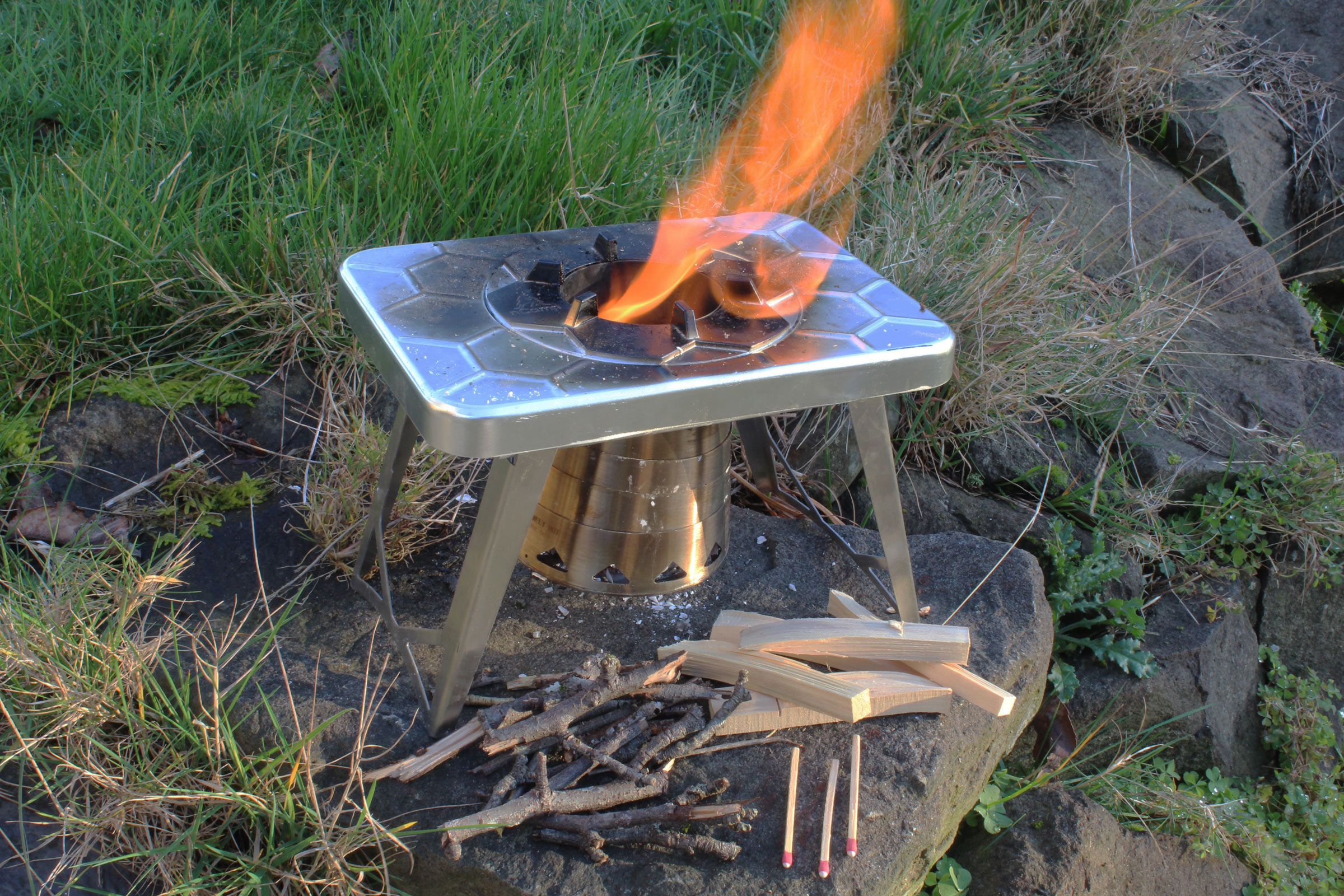
Wood burns cleanly with little smoke once the fire gets going and makes a small but pleasant contained “campfire” after dark.
Wood burns cleanly with little smoke once the fire gets going and makes a small but pleasant contained “campfire” after dark. With twigs and Port Orford cedar kindling fueling the stove, 16 oz of water boiled in 7:30. The combustion chamber goes through wood quickly and I fed the fire a couple of times as the water was heating up.
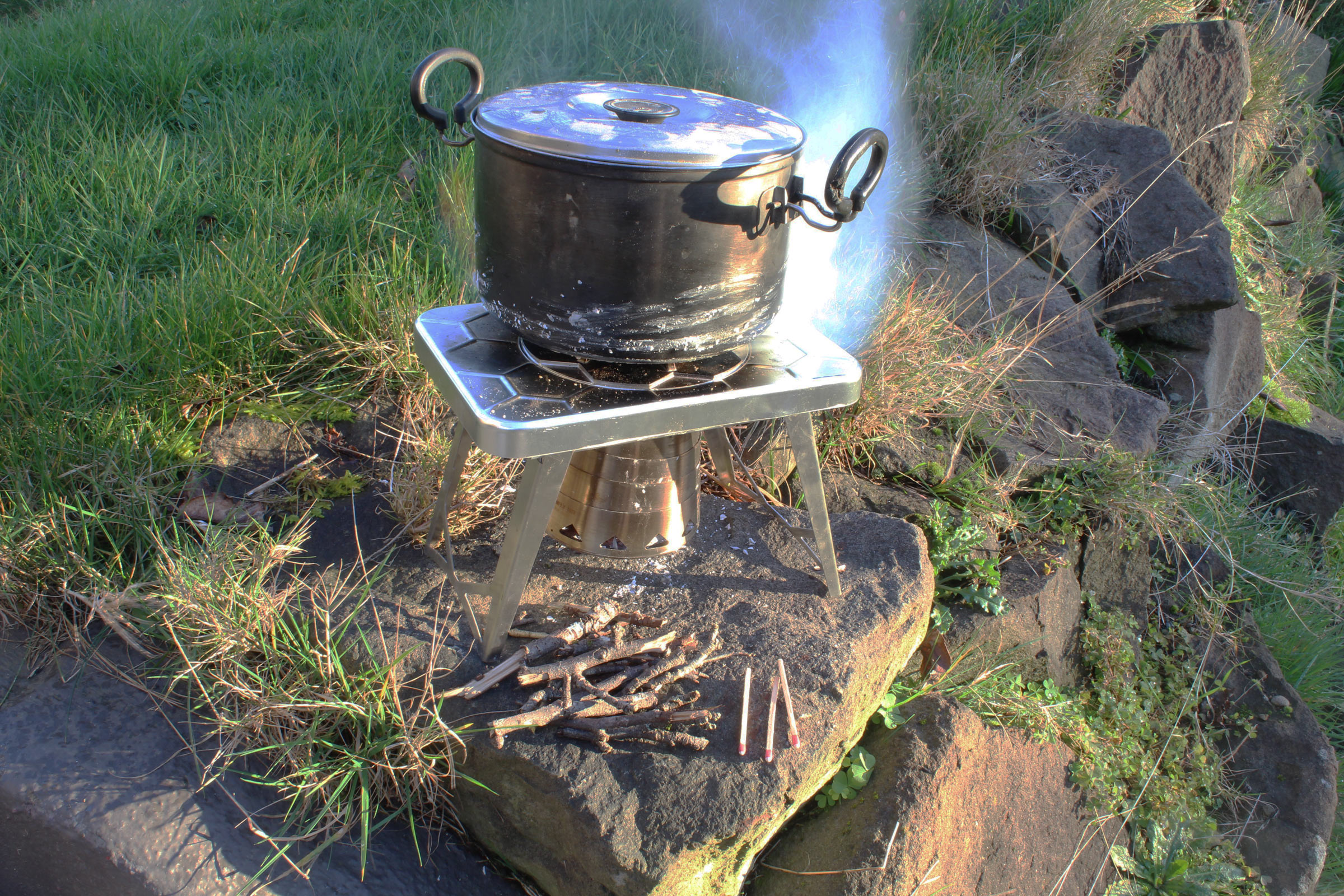
Putting a pot on for cooking slows the draft and the fire produces more smoke. The bottom of the pot here is streaked with bar soap to make it easier to clean the soot off.
The stovetop has six molded-in supports that elevate the cooking pot 3/8″ to give the fire room to breathe. With some of the fires I made in the stove, that didn’t seem to be quite enough and the fire went from burning cleanly without a pot in place, to producing a lot of smoke with the pot over the hole. And the pot bottom would get a coating of tarry soot, a sign of incomplete combustion. Rubbing bar soap over the bottom of the pot before use made any soot deposited easier to clean.
Unlike canister gas and alcohol, wood creates a lot of heat at the bottom of the stove, enough that the stainless-steel rings of the combustion chamber begin to glow a dark red. A good measure of that heat is radiated downward and will scorch whatever surface the stove is set on unless the legs are elevated or something heat-resistant is set under the combustion chamber.

While I was cooking breakfast—an omelet with mushrooms, leeks, and sugar snap pea pods—the opening of the combustion chamber created a hot spot on this thin stainless steel pot lid I used for a cooking pan. By moving it every so often I was able to avoid scorching the omelet.
The nCamp stove doesn’t have a built-in igniter, so you’ll need a sparker, matches, or a lighter to use it. But if you have a lighter with you, you can leave the fuel canisters and adapters in the boat or in camp, tuck the folded stove in a day pack, and have a hot meal and hot drinks anywhere there are dry twigs—and enjoy a small enclosed hand-warming fire when the stove isn’t being used for cooking.![]()
Christopher Cunningham is the editor of Small Boats Magazine.
The Multi-Fuel Stove, with adapter, is available from nCamp for $69. It is also carried by online retailers.
Is there a product that might be useful for boatbuilding, cruising, or shore-side camping that you’d like us to review? Please email your suggestions.

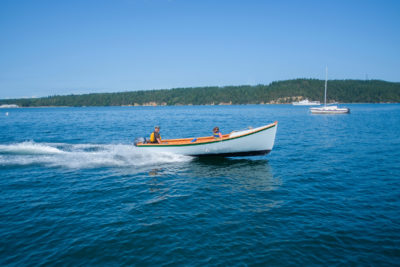
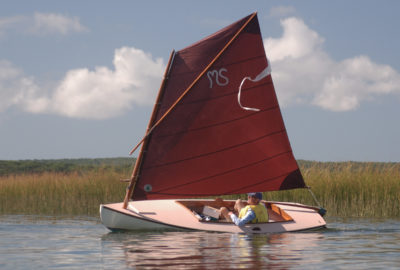
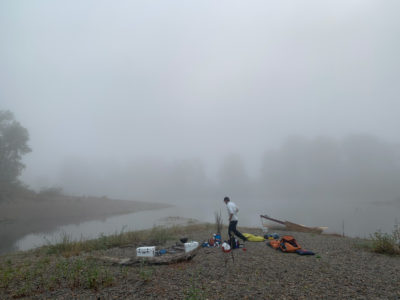
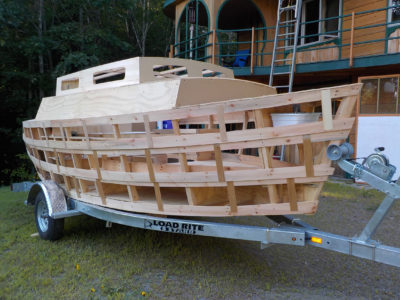
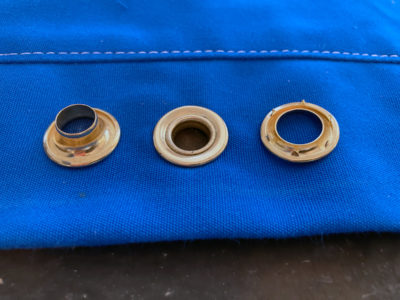
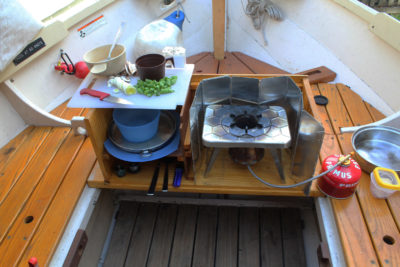
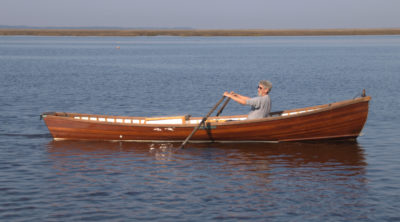

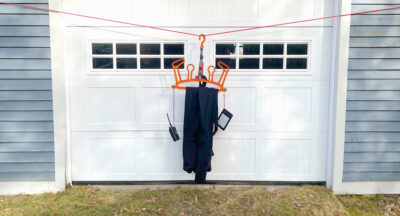
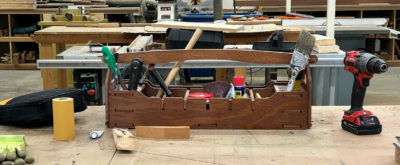
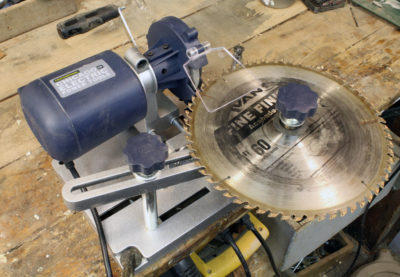
That looks like a very stable little stove, and the fact it uses so many different fuels is remarkable. One question though. I’d like to know where the wind screen shown in some of the pictures comes from? I do a bit of backpacking as well, and would like that type of screen for my stove.
If you do a web search for “folding camp stove wind screen,” you’ll find many very much like the one I bought.